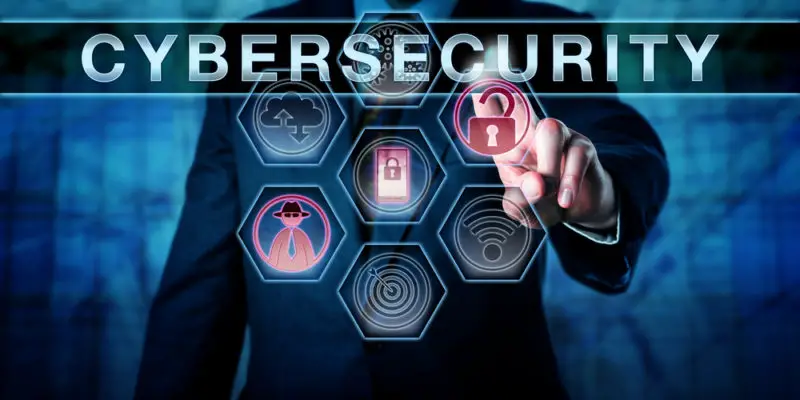The NIST Cybersecurity Framework (CSF) is a set of guidelines and best practices designed to help organizations manage and reduce cybersecurity risks.
One of the key components of the CSF is the use of Key Risk Indicators (KRIs), which are metrics that help organizations measure and monitor their cybersecurity risks.
KRIs can be used to identify potential threats, evaluate the effectiveness of existing security controls, and track progress toward achieving cybersecurity goals.
The use of KRIs is an important part of any cybersecurity program. Organizations can improve their cybersecurity posture by tracking and measuring key metrics to identify areas that need improvement.
KRIs can be used to monitor a wide range of cybersecurity risks, including threats to data confidentiality, integrity, availability, and risks related to network security, application security, and physical security.
Understanding NIST Cybersecurity Framework
The NIST Cybersecurity Framework (CSF) is a set of guidelines, standards, and best practices developed by the National Institute of Standards and Technology (NIST) to help organizations manage and reduce cybersecurity risk.
It provides a framework for organizations to identify, assess, and manage cybersecurity risk in a way that is consistent with their business needs and risk tolerance.
The framework is organized around five key functions: Identify, Protect, Detect, Respond, and Recover. These functions provide a comprehensive view of the lifecycle for managing cybersecurity risk over time.
The activities listed under each function may offer a good starting point for organizations to develop their cybersecurity programs.
The Identify function is focused on understanding an organization’s cybersecurity risk, including the systems, assets, data, and capabilities that are critical to its operations. This function includes activities such as asset management, risk assessment, and governance.
The Protect function is focused on implementing safeguards to protect an organization’s systems, assets, and data from cyber threats. This function includes activities such as access control, awareness and training, and data security.

The Detect function is focused on identifying cybersecurity events as they occur or are about to occur. This function includes activities such as continuous monitoring, anomaly detection, and event analysis.
The Respond function is focused on taking action to contain, mitigate, and recover from a cybersecurity event. This function includes activities such as incident response planning, communication, and analysis.
Finally, the Recover function is focused on restoring normal operations after a cybersecurity event. This function includes activities such as recovery planning, improvements, and communication.
Organizations can use the NIST Cybersecurity Framework to develop a risk-based approach to cybersecurity tailored to their specific needs.
The framework is flexible enough to be used by organizations of all sizes and in all sectors, and it can be adapted to meet the unique needs of each organization.
Key Risk Indicators in Cybersecurity
Key risk indicators (KRIs) are measures that enable organizations to identify and assess the level of risk associated with their cybersecurity posture.
KRIs are used to monitor and track the effectiveness of security controls, identify vulnerabilities and threats, and measure the overall risk level of an organization’s IT infrastructure.
KRIs should be based on specific risk factors that are relevant to an organization’s cybersecurity risk profile. These factors may include the type and sensitivity of data being processed, the nature of the organization’s operations, the potential impact of a security breach, and the likelihood of an attack occurring.
The National Institute of Standards and Technology (NIST) Cybersecurity Framework provides guidance on developing KRIs as part of an overall risk management program.
The framework recommends that organizations identify and track a set of KRIs that are aligned with their overall risk management objectives.
Some examples of KRIs that may be relevant to an organization’s cybersecurity risk management program include:
- The number of security incidents or breaches.
- Time to detect and respond to security incidents.
- Vulnerability scan results.
- Patching compliance rates.
- User awareness and training completion rates.
- Compliance with security policies and standards.
KRIs should be tracked and monitored on an ongoing basis to ensure that they remain relevant and effective. Organizations should also periodically review their KRIs to ensure that they are aligned with their overall risk management objectives and that they are providing meaningful insights into the organization’s cybersecurity posture.
In conclusion, KRIs are an important tool for organizations to assess and manage their cybersecurity risk. By identifying and tracking relevant KRIs, organizations can gain valuable insights into their security posture and take proactive measures to mitigate risk.
Identify, Protect, Detect, Respond, and Recover: Core Functions
The NIST Cybersecurity Framework (CSF) is a set of guidelines, best practices, and standards organizations can use to manage and reduce cybersecurity risk.
The Framework is organized around five core Functions: Identify, Protect, Detect, Respond, and Recover. Each Function is further divided into categories and subcategories that provide more specific guidance.
Identify Function
The Identify Function is the first step in implementing the NIST CSF. It involves developing an understanding of an organization’s assets, business environment, and risk management strategy.
The Identify Function includes subcategories such as Asset Management, Business Environment, Governance, Risk Assessment, and Risk Management Strategy.

Protect Function
The Protect Function involves implementing safeguards to ensure the delivery of critical infrastructure services. It includes categories such as Access Control, Awareness and Training, Data Security, Information Protection Processes and Procedures, Maintenance, and Protective Technology.
Detect Function
The Detect Function involves developing and implementing appropriate detection processes to identify cybersecurity events.
It includes categories such as Anomalies and Events, Security Continuous Monitoring, and Detection Processes.
Respond Function
The Respond Function involves taking appropriate action in response to a detected cybersecurity event. It includes categories such as Response Planning, Communications, Analysis, Mitigation, and Improvements.
Recover Function
The Recover Function involves restoring any capabilities or services that were impaired due to a cybersecurity event. It includes categories such as Recovery Planning, Improvements, and Communications.
Overall, the Core Functions of the NIST CSF provide a comprehensive view of the lifecycle for managing cybersecurity risk over time.
The Framework’s activities listed under each Function may offer a good starting point for organizations to develop their cybersecurity strategy.
Organizations can build resilience and reduce their cybersecurity risk by identifying and protecting assets, detecting cybersecurity events, responding to incidents, and recovering from them.
Implementing the Framework
Implementing the NIST Cybersecurity Framework involves a comprehensive approach to managing cybersecurity risk over time.
The framework is organized into five key functions: Identify, Protect, Detect, Respond, and Recover. Each function includes a set of activities that organizations can use as a starting point for managing cybersecurity risk.
To implement the framework, organizations should start by identifying their key assets and the risks associated with those assets.
This involves conducting a risk assessment to identify potential threats and vulnerabilities and determine a cybersecurity incident’s likelihood and potential impact.
Once the risks have been identified, organizations can use the Protect function to implement appropriate safeguards to reduce the risk of a cybersecurity incident. This may include implementing access controls, firewalls, and encryption technologies.
The Detect function is used to identify cybersecurity incidents as they occur. This involves implementing monitoring and detection systems to detect and alert the organization of potential incidents.
The Respond function is used to respond to cybersecurity incidents when they occur. This involves implementing an incident response plan and establishing procedures for responding to incidents promptly and effectively.
Finally, the Recover function is used to restore normal operations after a cybersecurity incident has occurred. This involves implementing a disaster recovery plan and establishing procedures for recovering from a cybersecurity incident.
Organizations can use the NIST Cybersecurity Framework to develop a cybersecurity program that is tailored to their specific needs and requirements.
The framework provides a flexible and repeatable process for managing cybersecurity risk that can be adapted to meet the needs of any organization.
The NIST Cybersecurity Framework Quick Start Guide provides a good starting point for organizations that are new to the framework.
The guide provides an overview of the framework and includes a set of activities that organizations can use to get started with the framework.
Implementing the NIST Cybersecurity Framework can help organizations improve their cybersecurity posture and reduce the risk of a cybersecurity incident.
Organizations can better protect their assets and maintain trust by taking a comprehensive approach to cybersecurity.
Role of Legal and Regulatory Requirements
Legal and regulatory requirements play a crucial role in the development and implementation of Key Risk Indicators (KRIs) in the NIST Cybersecurity Framework.
KRIs are used to measure and monitor the effectiveness of an organization’s cybersecurity risk management program. Legal and regulatory requirements provide the foundation for developing KRIs that are relevant and effective.
Applicable laws and legal and regulatory requirements provide the basis for identifying and assessing cybersecurity risks. They also determine the level of protection needed to safeguard critical assets, data, and information systems.
Organizations must comply with these requirements to avoid legal and financial penalties, reputational damage, and loss of customer trust.
Legal and regulatory requirements also help organizations identify the types of KRIs that are relevant and necessary for their cybersecurity risk management program.
For example, the General Data Protection Regulation (GDPR) requires organizations to implement adequate technical and organizational measures to protect personal data.
KRIs related to data protection, such as the number of data breaches or the percentage of encrypted critical data can help organizations measure compliance with this requirement.
In addition, legal and regulatory requirements can help organizations to prioritize their cybersecurity risk management efforts.
For example, the Payment Card Industry Data Security Standard (PCI DSS) requires organizations that handle credit card information to implement specific security controls to protect cardholder data.
KRIs related to PCI DSS compliance, such as the number of failed audits or the percentage of transactions processed securely, can help organizations identify areas of weakness and prioritize their remediation efforts.
Legal and regulatory requirements provide the foundation for developing and implementing effective KRIs in the NIST Cybersecurity Framework.
Organizations that comply with these requirements and use KRIs to measure and monitor their cybersecurity risk management program are better equipped to protect critical assets, data, and information systems from cyber threats.
Managing Cybersecurity Risks in Supply Chain
Managing cybersecurity risks in the supply chain is crucial for any organization that wants to protect its assets and reputation. The supply chain is a complex network of entities that include suppliers, manufacturers, distributors, retailers, and customers.
Each entity plays a critical role in the supply chain, and if one entity is compromised, it can lead to a ripple effect that can impact the entire chain.
Supply chain risk management (SCRM) is the process of identifying, assessing, and mitigating risks in the supply chain. Cybersecurity supply chain risk management (C-SCRM) is a subset of SCRM that focuses specifically on cybersecurity risks.
C-SCRM involves identifying and assessing cybersecurity risks in the supply chain, developing strategies to mitigate those risks, and monitoring the supply chain for new risks.
The National Institute of Standards and Technology (NIST) has developed a comprehensive guide for C-SCRM that provides organizations with a framework for managing cybersecurity risks in the supply chain.
The guide outlines a five-step process for managing C-SCRM:
- Identify: Identify and document the assets, systems, data, and capabilities that are critical to the organization’s mission and business functions.
- Assess: Assess the cybersecurity risks associated with the organization’s supply chain, including the risks posed by suppliers, their products and services, and the supply chain itself.
- Mitigate: Develop and implement risk response strategies to mitigate the cybersecurity risks identified in the assessment phase.
- Verify that the risk response strategies are effective and that the organization’s cybersecurity posture is improving.
- Monitor: Continuously monitor the supply chain for new cybersecurity risks and adjust the risk response strategies as necessary.
By following this framework, organizations can effectively manage cybersecurity risks in their supply chain and protect their assets and reputations.
It is important to note that C-SCRM is an ongoing process and requires continuous monitoring and adjustment to be effective.
Privacy Considerations in the Framework
The NIST Cybersecurity Framework is a widely recognized tool for managing and reducing cybersecurity risks for organizations.
However, it is also important to consider privacy risks and concerns when implementing the framework. The NIST Privacy Framework is a reference tool that can be used in conjunction with the Cybersecurity Framework to address privacy risks and concerns.
The Privacy Framework provides a risk-based approach to managing privacy risks that is flexible enough to address the diverse privacy needs of individuals and organizations.
It is designed to help organizations better understand and manage privacy risks associated with their products, services, and systems.
The Privacy Framework emphasizes the importance of identifying and managing privacy risks throughout the entire lifecycle of an organization’s products, services, and systems.
When implementing the Cybersecurity Framework, organizations should also consider the Privacy Framework’s core functions: Identity, Govern, Control, Communicate, and Protect.
These functions can help organizations to better understand and manage privacy risks associated with their products, services, and systems.
For example, the Identify function can help organizations identify the types of personal information they collect, process, and store.
The governance function can help organizations to establish policies and procedures for managing privacy risks. The Control function can help organizations to implement technical and administrative controls to protect personal information.
The Communicate function can help organizations to communicate their privacy practices to individuals and stakeholders.
Finally, the Protect function can help organizations implement safeguards to protect personal information from unauthorized access, use, and disclosure.
The NIST Cybersecurity Framework is a valuable tool for managing cybersecurity risks, but it is also important to consider privacy risks and concerns when implementing the framework.
The NIST Privacy Framework can be used in conjunction with the Cybersecurity Framework to address privacy risks and concerns.
Organizations can better manage privacy risks by using the Privacy Framework’s core functions for their products, services, and systems.
Role of Stakeholders in Cybersecurity
In the NIST Cybersecurity Framework, the role of stakeholders is critical in ensuring that an organization’s cybersecurity posture is effective.
Stakeholders are individuals or entities who have an interest in the organization’s cybersecurity program. They can be internal or external to the organization and can include employees, customers, partners, suppliers, regulators, and the public.
Internal Stakeholders
Internal stakeholders are individuals or groups within the organization who have a direct interest in the cybersecurity program.
They can include executives, managers, IT staff, and other employees who use or manage information systems. Internal stakeholders are responsible for ensuring that the organization’s cybersecurity program is aligned with its business objectives and that it is integrated into the organization’s overall risk management program.
External Stakeholders
External stakeholders are individuals or groups outside the organization who have an interest in the cybersecurity program.
They can include customers, partners, suppliers, regulators, and the public. External stakeholders are responsible for ensuring that the organization’s cybersecurity program is aligned with their expectations and that it meets their requirements.
They can also provide valuable feedback on the effectiveness of the program.
Public Sector
In the public sector, stakeholders can include government agencies, law enforcement, and other organizations that have a role in ensuring the security and resilience of the nation’s critical infrastructure.
Public sector stakeholders are responsible for developing policies, standards, and guidelines that govern the cybersecurity of their respective organizations.
They are also responsible for collaborating with other stakeholders to ensure that the nation’s critical infrastructure is protected from cyber threats.
Private Sector
In the private sector, stakeholders can include customers, partners, suppliers, and other organizations that have a relationship with the organization.
Private sector stakeholders are responsible for ensuring that the organization’s cybersecurity program meets their expectations and that it is aligned with their business objectives.
They can also provide valuable feedback on the effectiveness of the program and can collaborate with the organization to improve its cybersecurity posture.
The role of stakeholders in cybersecurity is critical in ensuring that an organization’s cybersecurity program is effective.
Organizations can develop a cybersecurity program aligned with business objectives by collaborating with stakeholders.

Improvements and Changes in NIST Framework
The NIST Cybersecurity Framework (CSF) is a widely used framework for managing cybersecurity risks. Since its initial release in 2014, the framework has undergone several updates and changes.
The latest version of the framework, CSF 2.0, reflects a number of significant improvements and changes.
One of the major changes in CSF 2.0 is the expansion of the framework’s scope. The framework now explicitly covers all organizations, regardless of type or size, instead of just critical infrastructure.
This change is in response to feedback from stakeholders who felt that the framework was too narrowly focused.
Another significant improvement in CSF 2.0 is the incorporation of key risk indicators (KRIs). KRIs are metrics that organizations can use to assess their cybersecurity risk posture.
Integrating Key Risk Indicators (KRIs) into the framework, NIST offers organizations a more comprehensive approach to managing cybersecurity risks.
The CSF 2.0 also includes updates to several of the existing functions and categories. For example, the “Identify” function now includes a new category called “Supply Chain Risk Management.” This category is designed to help organizations manage the cybersecurity risks associated with their supply chain.
NIST has also made changes to the framework based on public comment. For example, NIST received feedback that the framework was too complex and difficult to use. In response, NIST has made several changes to simplify the framework and make it more user-friendly.
The improvements and changes in CSF 2.0 reflect NIST’s commitment to providing organizations with a comprehensive, flexible, and effective framework for managing cybersecurity risks.
Incorporating key risk indicators (KRIs) and responding to feedback from stakeholders, NIST ensures that its framework remains relevant and useful in an ever-changing threat landscape.
Understanding NIST CSF 2.0
The NIST Cybersecurity Framework (CSF) is a set of guidelines and best practices designed to help organizations manage and reduce their cybersecurity risks.
The framework was initially published in 2014 and has since been widely adopted by organizations of all sizes and across various sectors.
The latest version of the framework, NIST CSF 2.0, was released as a public draft in 2023. The discussion draft reflects several major changes, including an expanded scope, the addition of a sixth function, Govern, and improved and expanded guidance on implementing the CSF – especially for creating profiles.
The CSF 2.0 Core consists of five functions: Identify, Protect, Detect, Respond, and Recover. Each function is further broken down into categories and subcategories, which provide more detailed guidance on specific actions that organizations can take to improve their cybersecurity posture.
One of the key features of the NIST CSF 2.0 is the Implementation Examples, which provide practical guidance on how organizations can implement the framework in different contexts. As the CSF 2.0 is finalized, the updated Implementation Examples will be maintained on the NIST CSF website.
Overall, the NIST CSF 2.0 provides a comprehensive and flexible framework that can be adapted to the specific needs of different organizations. By following the guidelines and best practices outlined in the framework, organizations can improve their cybersecurity posture and reduce their risk of cyber attacks.
FAQs and Resources
Here are some frequently asked questions and resources related to Key Risk Indicators (KRIs) in the NIST Cybersecurity Framework:
- What are Key Risk Indicators (KRIs)? KRIs are metrics that help organizations identify changes in the level of risk to their systems and data. These can be quantitative or qualitative measurements that are used to track trends and provide early warning signs of potential security issues.
- How do KRIs relate to the NIST Cybersecurity Framework? KRIs are an important part of the NIST Cybersecurity Framework, which provides a flexible and comprehensive approach to managing cybersecurity risk. The Framework includes guidance on how to identify, assess, and manage risk, as well as how to use KRIs to monitor risk over time.
- What are some examples of KRIs? Examples of KRIs include the number of failed login attempts, the percentage of systems that are patched and up-to-date, and the number of security incidents reported each month. These metrics can help organizations identify potential security issues and take action to address them before they become major problems.
- Where can I find more information on KRIs and the NIST Cybersecurity Framework? The NIST Cybersecurity Framework website provides a wealth of resources for organizations looking to implement the Framework, including the NIST SP 800-53 security controls catalog, which includes a list of KRIs that can be used to monitor security risks.
KRIs are an important tool for organizations looking to manage cybersecurity risk and stay ahead of potential security threats. By tracking these metrics over time, organizations can identify trends and take proactive steps to address potential security issues before they become major problems.

Chris Ekai is a Risk Management expert with over 10 years of experience in the field. He has a Master’s(MSc) degree in Risk Management from University of Portsmouth and is a CPA and Finance professional. He currently works as a Content Manager at Risk Publishing, writing about Enterprise Risk Management, Business Continuity Management and Project Management.

